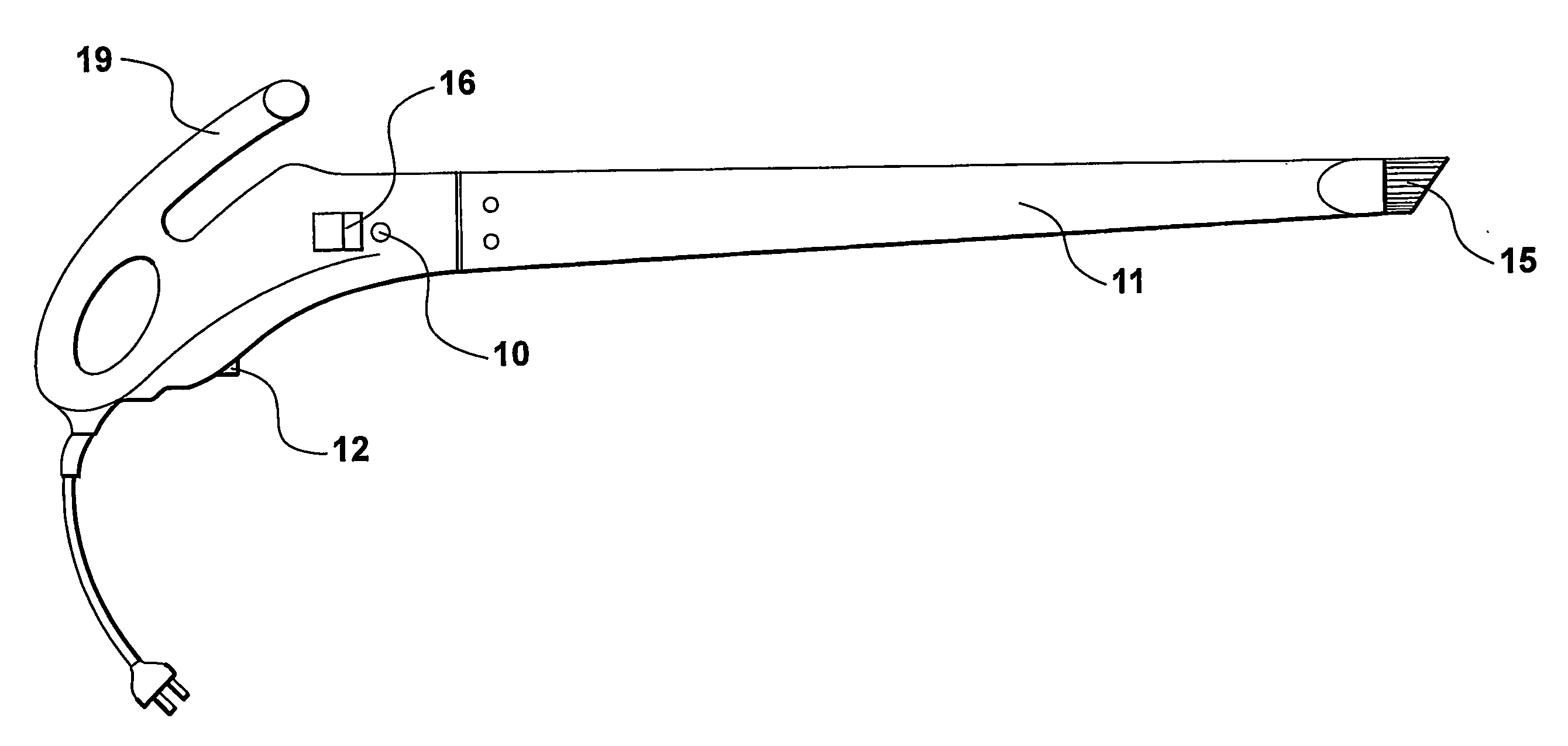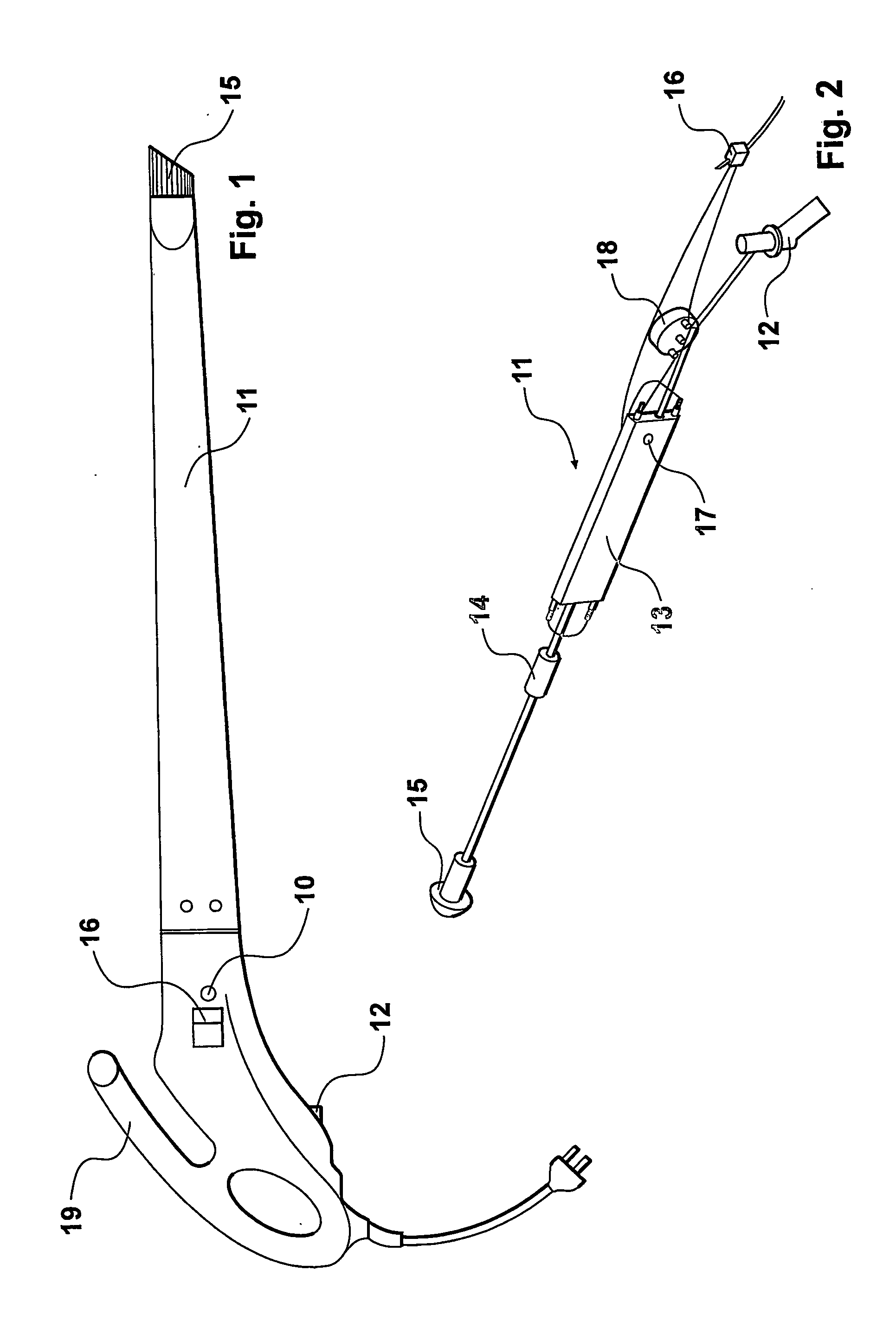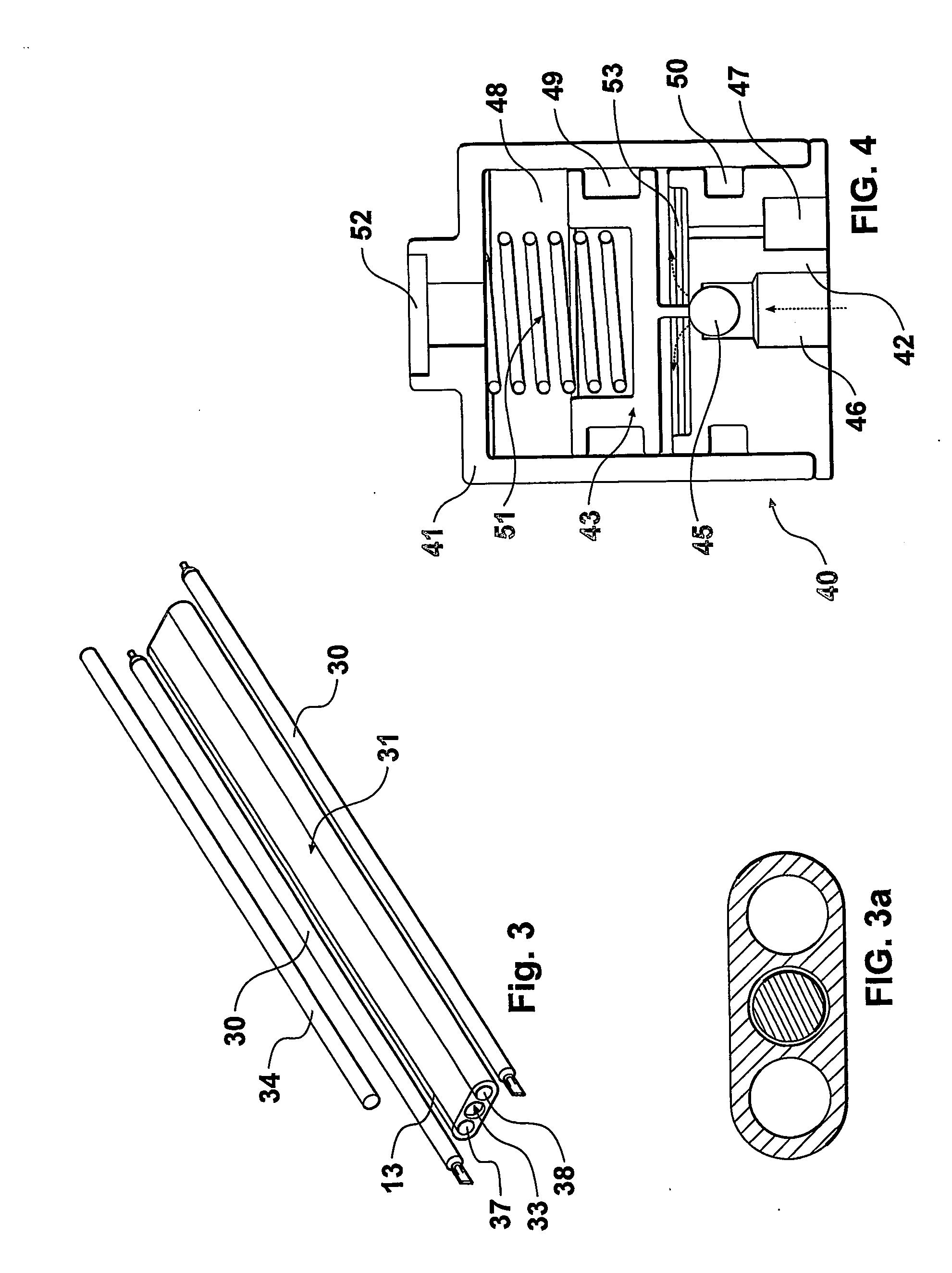Fluid heater
a heater and flue technology, applied in the field of flue heaters, can solve problems such as failure, catastrophic failure, and difficulty in controlling in practi
- Summary
- Abstract
- Description
- Claims
- Application Information
AI Technical Summary
Benefits of technology
Problems solved by technology
Method used
Image
Examples
example 1
[0066]FIG. 1 shows the assembled weed killer in the form of a hand tool comprising a wand 11 of about 1 metre in length, having a substantially oval cross section through its main length of approximately 100 mm along the long axis and 50 mm along the transverse short axis, with a handle at the top of the wand to which a garden hose can be connected at fitting 12, and from which a power cord extends from the base of the handle. Within the hollow body of the wand 11 there is an electrically powered heater which will be described in more detail below. An on-off switch 16 and power indicating light 10 are provided on the handle.
[0067] In use the wand 11 is connected to a supply of water via a garden hose, and the power cord is connected to (in this case) an extension lead, to mains supply. In its most preferred form the power supply would be capable of supplying from 2 kW to about 2.4 kW, for example in New Zealand this would be a 240 volt power supply at 10 amps, and in North America ...
example 2
[0090] The heater 13 has a heat sink assembly designed to raise the water temperature from an input temperature of approximately 10-20 degrees Celsius to about 100 degrees Celsius, in this instance, for the DIY market in the eradication of weeds and other undesirable plants. In fact, most prototypes of this invention provided an output of pressurised hot water at about 107 degrees Celsius (plus / minus 1 degree Celsius).
[0091] This is achieved by inserting standard bar electric resistance heating elements 30 (FIG. 3) into a block of aluminium 31 constituting a heat sink and providing a duct 33 for the water to pass through, in the same block.
[0092] Preferably a pair of electric heating elements are provided, so that for a 240 volt power supply the elements can be wired in series, and in the case of 110 volt power supply the elements can be wired in parallel. Alternatively the aluminium block may be longer, with a single heat element, or may be a more compl...
example 3
Thermal Pressure Regulator
[0118] The valve shown in FIG. 3 as flow control valve 14 is preferably a specially designed thermal pressure regulator. A first prototype thermal pressure regulator used a piston, the movement of which is controlled by the temperature response of the vapour pressure of a liquid; in this case the preferred liquid is water, which turns to steam at 100 degrees Celsius, at atmospheric pressure. It will be appreciated that the nature of the liquid can be varied, depending upon the temperature at which the valve is designed to open. This example is concerned with a piston valve, but other types of valves can be designed to use the vapour pressure principle.
[0119] The thermal Pressure regulator as fitted to the weed killer is a special low-pressure water regulator 40 using vapour pressure to control the temperature of the outgoing water. It differs from other pressure regulators by having a sealed pressure chamber in which a small amount of water (or other liqu...
PUM
 Login to View More
Login to View More Abstract
Description
Claims
Application Information
 Login to View More
Login to View More - R&D
- Intellectual Property
- Life Sciences
- Materials
- Tech Scout
- Unparalleled Data Quality
- Higher Quality Content
- 60% Fewer Hallucinations
Browse by: Latest US Patents, China's latest patents, Technical Efficacy Thesaurus, Application Domain, Technology Topic, Popular Technical Reports.
© 2025 PatSnap. All rights reserved.Legal|Privacy policy|Modern Slavery Act Transparency Statement|Sitemap|About US| Contact US: help@patsnap.com



